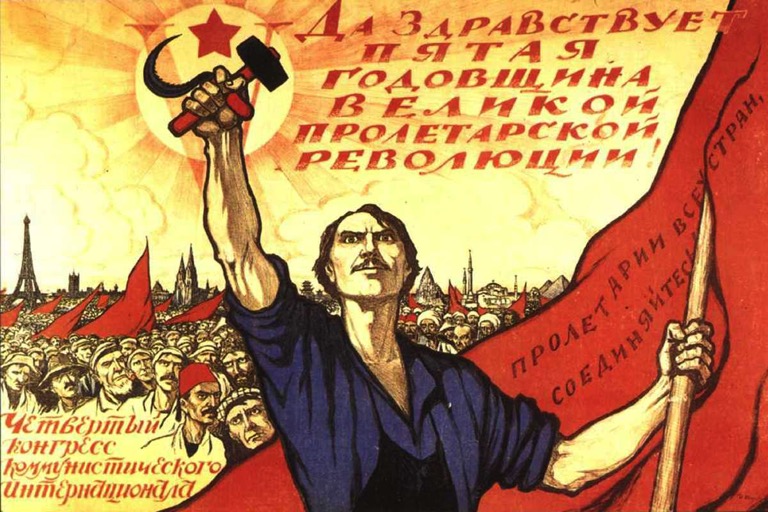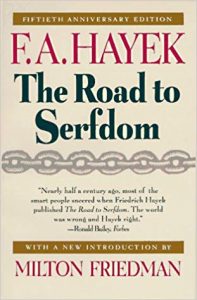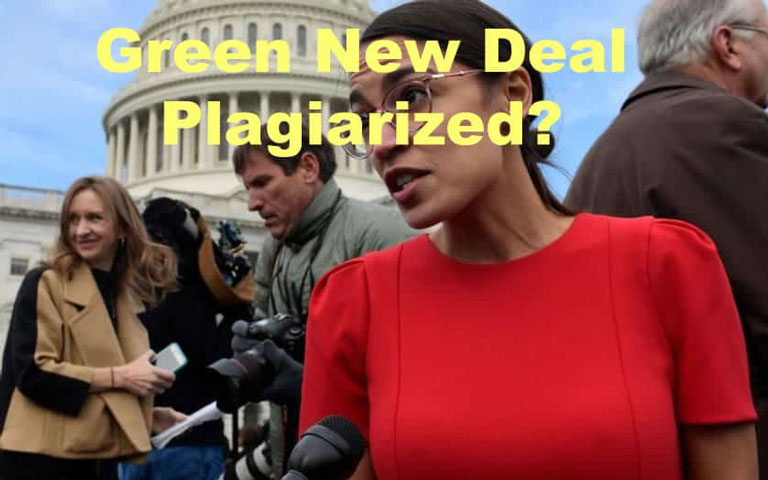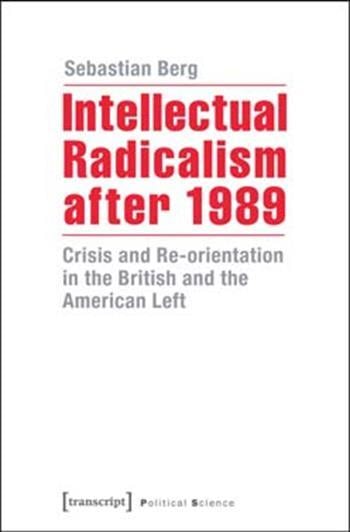by Michael J. Kramer
Reviewing “Intellectual Radicalism after 1989: Crisis and Reorientation in the British and the American Left” by Sebastian Berg
For much of the twentieth century, Marxists thought they would be the ones declaring the end of history. Instead, it was a more conservative figure, Francis Fukuyama, who became famous for arguing that the game was up. Worse yet for Marxists, Fukuyama contended that the final destination of the historical dialectic was not a communist state of liberated workers, but rather Western-style capitalism and liberal democracy. This may appear rather quaint given how history has currently led to the Age of Trump and the rise of authoritarian regimes around the world. During the early 1990s, however, the situation looked different. With the fall of the Berlin Wall, the demise of the Soviet Union and the Eastern Bloc, and the Tiananmen protests in China, Fukuyama’s analysis struck a chord. Leftwing radicalism, or any radicalism for that matter, seemed to be dead. The permanent revolution belonged to be bourgeoisie.
The success of Fukayama’s argument, published first in a 1989 essay for The National Interest _and then as the best-selling book _The End of History and the Last Man, _suggests how difficult the years around 1989 were for the left. While a few theorists of radicalism in Britain and the United States thought that the end of the Cold War heralded new opportunities for emancipatory politics, most despaired of what was to become of socialism. “We are in a period of uncertainty and confusion,” Michael Walzer wrote in _Dissent in 1992, “The collapse of communism ought to open new opportunities for the democratic left, but its immediate effect has been to raise questions about many leftist (not only communist) orthodoxies: about the ‘direction’ of history, the role of state planning in the economy, the value and effectiveness of the market, the future of nationalism, and so on” (7). For British political scientist Andrew Gamble, “Nothing quite as cataclysmic, however, has occurred before in the history of Marxism as the collapse of the Soviet Union between 1989 and 1991.” Writing at the end of the 1990s, Gamble thought that “despite the ossification of Marxism as a doctrine in the Soviet Union, and the open repudiation of the Soviet system by Marxists in other parts of the world, the extent to which in the previous seventy years the meaning of Marxism and of socialism had become inextricably bound up with the fate of the Soviet Union had not been fully appreciated” (8).
These quotations open Sebastian Berg’s book Intellectual Radicalism after 1989: Crisis and Reorientation in the British and the American Left. _Written in the dry, analytic, slow-paced style befitting its origins as a German university dissertation, the book nevertheless manages to reveal vividly how uncertain, if not downright bleak, the situation appeared to left-wing intellectuals during the early 1990s. Yet in carefully tracking writing in four magazines—_Dissent _and _Monthly Review _in the United States and, across the Atlantic, _New Left Review _and _Socialist Register _in England—_Berg also documents how even in this period of bewilderment, new ideas, positions, and imaginings of radicalism were also beginning to take shape. Among them, a “post-Marxist” transition to what would become the “anti-globalization” movement would eventually crystallize in the 1999 WTO protests in Seattle. A renewed curiosity about non-statist modes of radical activity in the realms of community and civil society emerged, both within conventional parliamentarian spaces of reformist politics and also out in the streets. This line of thinking would culminate in the Occupy movement of 2011. More abstractly, but just as importantly, intellectual radicals began to reexamine ideas about history itself: what was it, exactly? And how was history still in flux if no longer on the march toward a clear destination?
Today, rather than communism, it is democratic socialism—the “democratic left” as Michael Walzer called it—that is growing in unexpectedly expansive forms in the United States, particularly after the 2008 financial crisis and in the seemingly endless toll of violence and despair called the War on Terror. The surprising success of the 2016 Bernie Sanders presidential campaign is one indicator of something new afoot. So too, in Britain, the fiery leadership of Jeremy Corbyn has reinvigorated a more left-leaning Labour Party. At the same time, we are in a period of enormous backlash, some of it fostered, ironically, by the very Russian government whose leader, Vladimir Putin, rose to power within the Soviet Union’s security apparatus and then emerged, Phoenix-like, from the ashes of communism’s demise. Most of all, our vexing and traumatic times give the lie to Fukuyama’s prediction. History did not end. In fact, history is very much alive and kicking, in terrifying as well as hopeful ways. A look back to those first uncertain years after 1989 therefore seems worthwhile. What were intellectuals on the left writing in that moment of crisis? And how did their thinking relate to a larger cultural context in which many sang along approvingly with Mike Edwards of the London band Jesus Jones as he sat in front of a television screen “watching the world wake up from history” in the 1991 MTV video for the hit song “Right Here, Right Now,” which quickly becoming something of a soundtrack for the moment?
A number of recent books have, like Berg, begun to address these questions, but they have done so not by directly analyzing intellectuals, but rather by focusing on the realms of popular culture and political economy—and where the two meet. Cultural critic Joshua Clover’s fabulously strange 1989: Bob Dylan Didn’t Have This to Sing About, published in 2009, suggests that a “constellation of changes in pop music around 1989 might be tied to changes in the world at large—that is, might provide ways of thinking about the historical situation of ‘1989’” (7). Listening to grunge, gangsta rap, acid house, and other genres, Clover concludes that music such as Billy Joel’s truly awful “We Didn’t Start the Fire,” released just before the fall of the Berlin Wall, captured “an experience of immutable endlessness, of exploded time and a superfluity of history in the face of which meaningful action is impossible—this is the secret sense of the period in pop music. A feeling, if not a structure” (95). Ultimately, it is the teen pop of the era that best encapsulates the culture of the 1990s: “Teenpop is the dominant’s dominant,” Clover writes, “for the dot-com boom and Pax Americana—the very figure of the endlessly expanding market as celebratory stomping ground for risk-free adolescence…” (104). Brilliantly, even “Fukuyama’s version” of history becomes “more like a pop song” to this cultural critic’s sharp ears. “A formula that seems at once to tell a total story and condense it into a slogan, a logo, an image.” For Clover, “Is that not what the perfect chorus is for—in which ’the end of history’ becomes a hook so catchy and memorable, so improbably pleasing to repeat, that it spins around the globe in a blink?” (8).
Like Clover’s book, Phillip E. Wegner’s Life Between Two Deaths, 1989-2001: US Culture in the Long Nineties, _published in 2009 as well, focuses not only on details of the period drawn from popular culture, but also links them to political economy and asks how history itself was up for grabs during the supposed “end of history” (everybody sing along now!). Wegner, like Clover, takes his intellectual apparatus from cultural studies, and contends that “the 1990s represented a moment of heated debate over the direction of the future, and hence of immense historical possibilities for a global left, possibilities that are now, in the aftermath of the events of September 11, 2001, and the emergent global regime of the so-called war on terror, at risk of being forgotten” (1). Looking to novels and films as his sources more than pop music, Wegner wants to better understand the continuities between the fall of the wall in 1989 and the fall of the Twin Towers in 2001 rather than follow the dominant interpretation of 9/11 as a fundamental rupture from “the way things were.” He concludes that the uncertainty of the “long nineties” is worth revisiting now, particularly for those on the left: as the period just prior to our contemporary moment, it sits in an ambiguous location between the past and the present, and rather than convey “the way it really was,” Wegner seeks to extract its more utopian longings and desires because, he believes, these have the capacity to erupt in a Benjaminian “moment of danger” as a means of “fanning the spark of hope.” In fact those words, from Walter Benjamin’s famous “On the Concept of History” essay, serve as the epigraph for the introductory chapter in _Life Between Two Deaths (1).
These two studies draw upon pop cultural and literary materials to give us a much wider context in which to locate the leftwing magazine writers in Berg’s careful, focused study. In doing so, they reveal the growing distance between the focused orientation of radical intellectuals and the sprawling energies of the larger culture industry in the aftermath of 1989. Clover and Wegner themselves orient their historical thinking to the cultural studies approach of Raymond Williams, Frederic Jameson, Alain Badiou, and, perhaps most of all, Benjamin. The contrast between their adventurously wide-ranging subject matter as well as their theoretical orientation and Berg’s careful intellectual history spadework in examining four small radical journals indicates that odd gaps remain between the fields of cultural studies and intellectual history. Despite the fact that these two fields investigate similar topics, time periods, and methods here, it is almost as if one were watching two ships (of thought) that pass in the night. The historians and the cultural studies scholars both want to know how the history of ideas relate to ideational worlds in richer context; they both are thinking carefully about periodicity and how we organize change and continuity over time; and they both stake their claims in “readings” of artifacts, texts, and other materials. Yet, in the end, they do not meet. While cultural studies scholars such as Clover and Wegner take more risks in querying the uncanny ways in which very different areas of social life (pop culture and political economy) relate to shape the very ways we understand history itself, intellectual historians remain most interested in stabilizing history in order to perceive a certain construction of linearity, relationality, and a more static, organized map of how different levels of social interaction relate to each other. Perhaps, one wonders, these cultural studies scholars might do a bit more contextualization of the linkages between the ephemeral burble of pop and the clanking chains of political realities? And perhaps intellectual historians could use a good dose of the “trippier” approaches to historical inquiry found in cultural studies scholarship. This might especially be the case for trying to make sense of the period after the fall of the Berlin Wall, when, in the historical moment itself, thinkers such as Fukuyama were ready to claim, in eerily pop-song-like tones (as Clover contends), that history had come to an end.
Intellectual historians are, thankfully, taking up this task. There is Andrew Hartman’s A War for the Soul of America: A History of the Culture Wars, published in 2015, which surveys the culture wars of the 1990s and argues that what binds them together is a debate over “the idea of America” in the aftermath of the tumultuous events of the 1960s, when “new people, new ideas, new norms, and new, if conflicting, articulations of America itself” ruptured the fabric of post-World War II consensus and conformity. So too, James Livingston touches on the culture, politics, and intellectual life of the 1990s his book The World Turned Inside Out: American Thought and Culture at the End of the 20th Century, _published in 2010. Livingston’s book is quirkier than the more well-known _Age of Fracture _by Daniel Rodgers, which came out one year later, however, _The World Turned Inside Out offers what is, in many ways, a more intriguing argument: intellectual life did not merely fragment in the latter half of the twentieth century, Livingston contends, but did so in a particular way—it troubled, and sometimes outright flipped or reversed, the boundaries between insides and outsides, centers of power and margins of powerlessness, the everyday and the epic, the normal and the abnormal, the direct and the mediated, the instinctually felt and the abstractly reasoned, and, perhaps most of all, the 1990s witnessed a breaking down of the line between the internal self and the external world.
Read the Whole Article
Do you find these posts helpful and informative? Please CLICK HERE to help keep us going!




